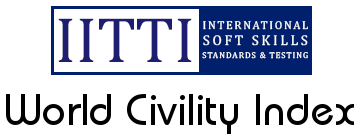“Managing change means humanizing it. It means to design the project from the standpoint of the people involved in order to avoid the fact that natural resistance has an impact on planned objectives.”
The Human Change Management Body of Knowledge (HCMBOK®), Third Edition by Vicente Goncalves & Carla Campos
Defining Change Management?
My preferred definition of Change Management is proactively navigating the human change journey in order to successfully reach the new state.
How is managing change in NGOs different from any other organisation?
The foundational principles are universal across all organisations as they are principles for managing human behaviour. The variations come in in relation to where the focus lies in the required activities and focus. Stakeholder Mapping and Management looms large within NGOs due to the delicate balance NGOs must play between delivering to the Community in the right way while keeping Donors and Funders appraised and satisfied. The role of Supplier Engagement and Management is vital in delivering on time and in budget.
Strong, Visible Sponsorship
A Sponsor is someone with credibility and power to drive the change, monitor it, and intervene whenever necessary.
The time required from them needs to be factored into their diary as it is active time and not passive time. Many a project has stumbled due to the absence of the Sponsor. Sponsorship is a doing word!
Key Responsibilities of the Sponsor
- Practice strong, visible, empathetic leadership.
- Establish vision and direction.
- Align people and teams, build team spirit and cooperation.
- Motivate and inspire people.
- Planning and Budgeting
- Manage people by following processes, methods, policies, etc.
- Controlling and problem solving
Source: Leading Change by John Kotter)
Establish Change Vision and Direction
A critical success factor in guiding change is the formulation, establishment and communication of a clear Change Vision. The Change Vision clearly spells out the WHY of the change, the over riding purpose. Purpose is what the stakeholders identify with at a personal level. It is the heart of change.
A comprehensive Change Management Strategy and Plan
The strategic change management plan should be perceived as an integrated part of the project management plan and not as a separate plan. To facilitate the understanding and later approval by the project manager and sponsor, the process of developing the plan should be cooperative.
Key components of the Change Management Plan include:
Vision |Purpose and objective | Goals and metrics | Elements of the organizational culture | Maturity to deal with losses | Factors of resistance | Engagement factors | Stakeholder Map | Map of risk inherent in the human factor | Change management approach | Roles and responsibilities | Project management structure | Project team assignment and development plan | Identity such as logo, slogan, branding | Ordinary communication plan | Physical environment | Action plan | Change sustaining strategy | Project kick-off | Quick wins |Budget
Effective Stakeholder Management
A stakeholder is an entity, an individual or a group of individuals that will be directly or indirectly affected by the change. A stakeholder can be a company employee, a supplier, a donor, a union, customers, governmental bodies, etc.
The main focus of stakeholder engagement management is to reduce resistance and promote engagement in the change so that the strategic objectives that motivated the investment are achieved. There is no successful project without a suitable level of engagement in the change.
Ordinary and Extraordinary Communication Planning
(Adapted from The Human Change Management Body of Knowledge (HCMBOK®)
The primary objective of communication planning and management is to see that the stakeholders are mobilized, aligned, and connected with the challenges and goals throughout the journey of change.
Key Communication Elements to be included in the Plan.
Sender: The initial communication of the vision, purpose, objective, and goals of a project must be made by the Sponsor.
Writer: The writer of the comms needs to be clarified to avoid confusion over who holds this responsibility.
Message: The communication plan must consider the messages that can be planned, for example, the vision of the state to be achieved after the change, the purpose of the project, progress of each phase, goals achieved, etc.
Audience: The recipient of the message. Typically, a project has different audiences, so messages must be customized accordingly.
Medium: The channel that will transmit the message. The project or change manager needs to carefully evaluate the best medium for each audience and message.
Two Way Feedback: Communication is a two-way street. Feedback channels must be clear and, whenever possible, part of the message itself.
Creating and Maintaining Team Spirit
If you want to go fast, go alone. If you want to go far, go together.
— African Proverb
A Team comprises of people who share a common goal and who have built a relationship of trust. Teams take time to build and focus must be put on clearly agreeing responsibilities and outcomes. This enhances the teams ability to work together and perform well.
Within many NGOs projects are usually formed by multidisciplinary teams, often with individuals or teams who have never worked together. Some techniques to create synergy and build relationships are:
Leveraging technology to keep teams in touch.
- Internet connectivity is a reality and efforts must be made to ensure employees have the ability to participate in activities. Bandwidth is generally an issue in many parts of Africa and if a video call is the norm this creates exclusion of team members.
- Video recording of meetings are great to enable ease of internal sharing.
Create working groups on appropriate platforms.
- These include MS Teams, Google Meet, WhatsApp, Skype, Zoom where selected individuals can meet and communicate with colleagues.
Knowledge Management
A key pain point in many organisations, particularly NGOs is how knowledge is gathered, managed and stored for future use. Projects are excellent learning opportunities for individuals and organizations. The learning and accumulated knowledge must be stored, including:
- Project management
- In-depth knowledge of business processes and rules
- New technologies
- Critical factors for the success of a project
- Relationships with stakeholders
- Change management techniques
All tacit knowledge, the internal knowledge of each person that is not shared, is lost over time and weakens the organization
Essential Competencies of a Change Leader
“The change leader’s creativity and sensitivity are the primary components that cannot be replaced by any methodology, framework, or body of knowledge.” Adapted from The Human Change Management Body of Knowledge (HCMBOK®)
Key competencies can be summed up as:
- Sensitivity to human factors and Empathy
- Capacity to Facilitate, Inspire, and Encourage Team Effort
- A Focus on Results, Goals, and Productivity
- Ability to Manage Conflicts, Crises, and Opportunities
- Creativity, Inquisitiveness, Boldness, and Willingness to Break Paradigms
- Effectiveness as a Communicator; a Good Listener
- Transparency, Credibility, and Integrity
CONCLUSION
Implementing a change resilient culture takes intentionality and leadership. A focus on embedding the Organisational values is always a great place to start. Values are about behaviour, which drives culture. The customer promise becomes the employee promise which serves to drive the right behaviours.















